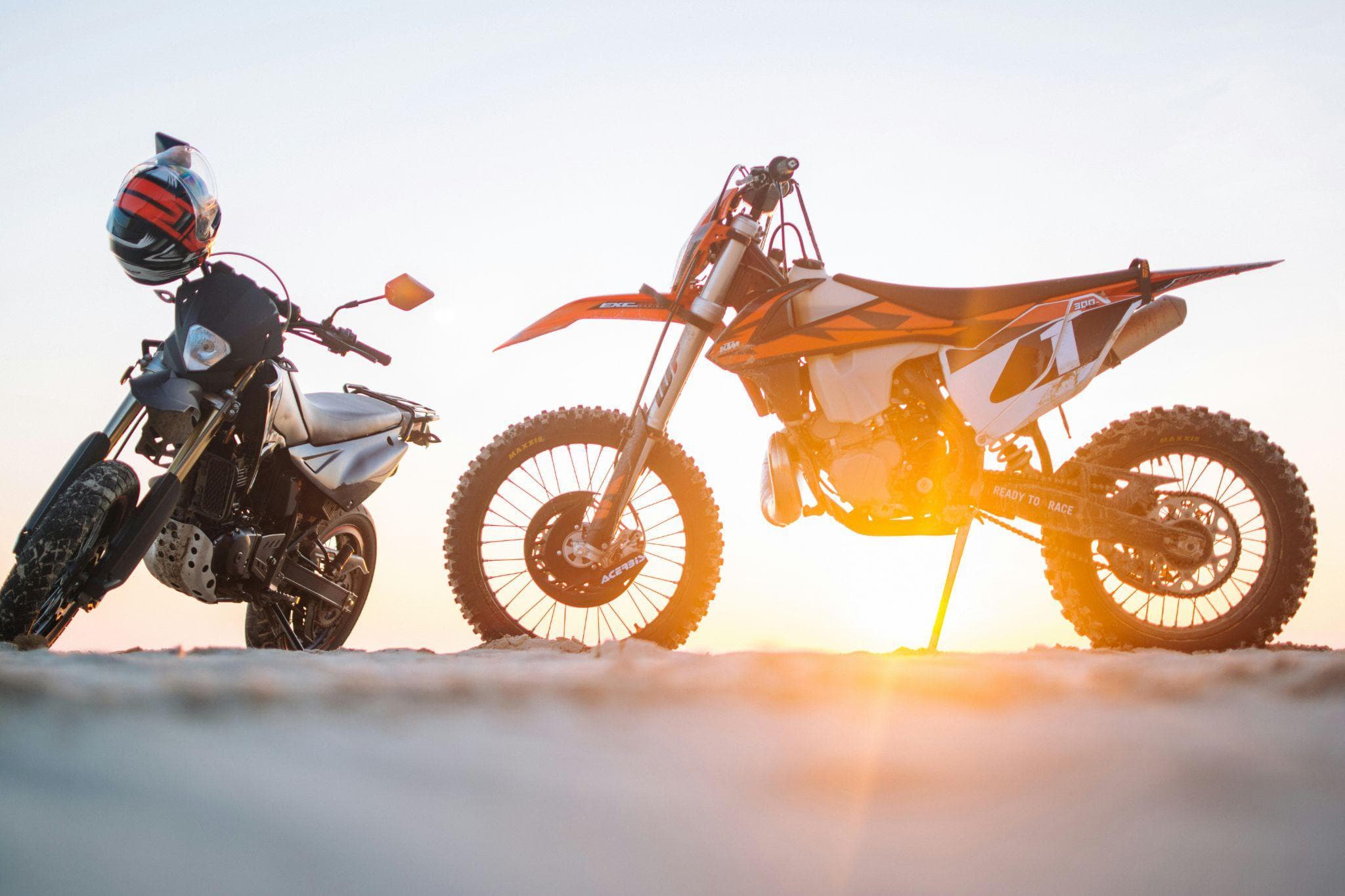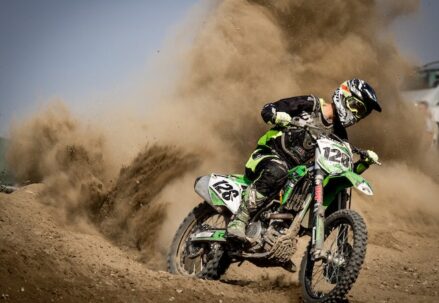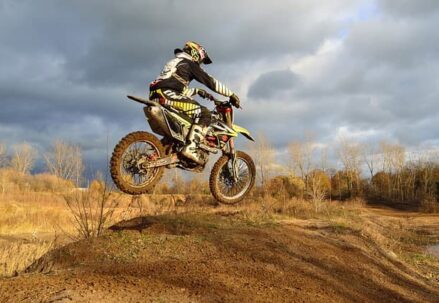Last weekend at Walton Raceway, I watched a kid’s face drop when he saw the massive ruts we’d carved into what used to be pristine hillside. Been riding for nearly three decades now, and that look? It hit different. The track owner mentioned they’d already spent twelve grand on erosion repair this season. Twelve grand. And here’s the thing – I’ve been that guy who figured track damage was just part of the game. Tear it up Saturday, let someone else worry about it Sunday.
But after helping rebuild my local track in Simcoe County following a brutal spring washout, I finally got it. We can’t keep riding like the earth has unlimited do-overs. The sport’s grown massively since I started racing in ’94, and honestly, the old ways ain’t cutting it anymore. More riders, more events, same amount of land. You do the math.
Track Erosion Prevention Methods That Actually Work
I’ve tried everything from hay bales to high-tech polymer solutions over the years. Some work brilliantly. Others? Complete waste of money. The silt fence disaster at Motopark last summer taught me that.
Here’s what actually makes a difference:
| Method | Cost | Effectiveness |
| Geotextile fabric barriers | $200-400 per 100ft | Excellent for permanent installations |
| Native grass seeding (not that Kentucky Blue garbage) | $50-150 per acre | Good, but takes patience |
| Terraced run-off channels | $1000-3000 per track section | Best long-term investment |
| Wood chip mulching | $30-60 per cubic yard | Decent for temporary fixes |
The terracing thing changed everything at our track. We basically copied what they did at Gopher Dunes – created these stepped drainage areas that look natural but handle water like a dream. Yeah, it cost us three grand for the main straightaway section, but we haven’t had major soil erosion there in two years.
Another thing is timing your track prep. We learned this the hard way. Never, and I mean never, disc your track right before rain’s expected. Seems obvious now, but man, the damage we caused in spring 2019… Still feel bad about that one. The key is working your soil when it’s got that perfect moisture content – not dust, not mud, but that sweet spot where it holds together.
Noise Reduction Without Killing Performance
Look, I get it. That bark of a properly tuned 450 is music. But my neighbour who works nights? Not such a fan. We lost two tracks in Ontario last year purely due to noise complaints.
I’ve tested everything from the FMF Q4 to the Pro Circuit R-304 Shorty (yeah, the irony isn’t lost on me). My decibel meter showed the Q4 dropped my YZ450F from 98dB to about 92dB. Doesn’t sound like much, but that’s actually huge in terms of sound perception.
What works: • FMF Q4 Hex – expensive at $550 but worth every penny for sound reduction • Strategic hay bale placement around the track perimeter (cuts about 3-5dB) • Restricting practice hours – we do 10am-6pm now, no exceptions • The Pro Circuit Type 296 spark arrestor (required at some tracks anyway) • Natural sound barriers – that tree line you want to cut down? Don’t. • Double-packed muffler systems, though some riders hate the weight
The controversial bit? I actually prefer the slightly muted sound now. Makes it easier to hear track conditions, other riders. Plus my ears aren’t ringing after a full day anymore.
Water Management and Dust Control
Water’s tricky. Use too much, you’ve got a mud bog and angry riders. Too little? Dust bowl that pisses off everyone within five kilometers.
We’ve found that watering at 6am and 2pm works best for our soil type – heavy clay mix that holds moisture pretty well. Costs us about $400 monthly in summer for water, but the calcium chloride treatment we tried? That was $2000 and lasted maybe six weeks. Not worth it, from what I’ve seen.
The game-changer was installing those agricultural sprinkler heads every 50 meters. Initial investment hurt ($3500), but man, the consistency is beautiful. No more dry spots, no more overwatered corners. And dust suppression is about 70% better than our old water truck method. During the brutal drought last August, we actually had riders from London driving two hours to ride our track because everywhere else was either dust city or closed for water conservation.
Wildlife-Friendly Track Design
This one surprised me. Never thought I’d care about turtle migration patterns, but here we are. After Sand Del Lee implemented those seasonal closures for nesting birds, their relationship with the conservation authority completely changed. Instead of constant battles, they’re actually getting grants now.
The secret? Work with nature’s schedule, not against it. We close sections during spring migration, rotate which areas we ride to let vegetation recover. During track closures for wildlife migration, some riders kill time with online games – I discovered the Motorhead video slot last spring break, though nothing beats actual riding. But those breaks? They actually help the track recover.
What smart tracks are doing:
- Creating dedicated wildlife corridors that riders never touch (usually the boggy areas we hate anyway)
- Installing nesting boxes for birds of prey – they control the rodent population naturally
- Keeping a 30-meter buffer zone from any waterways
- Seasonal closures that align with breeding seasons – usually just 3-4 weeks
- Using native plants for all restoration work
That buffer zone thing is huge. Keeps sediment out of streams, makes environmental assessments way easier. Twin Peaks MX in BC figured this out years ago, and they haven’t had a single environmental violation since 2018.
Getting Your Local Track On Board
Here’s where it gets tough. Convincing track owners to spend money on “tree-hugger stuff” (actual quote from a track owner in Barrie) isn’t easy.
Start small. Show them the insurance breaks some companies give for environmental compliance. Mention how Walton’s never had neighbor complaints after implementing their noise and dust programs. Bring up the proven conservation guidelines that actually protect tracks from lawsuits.
What worked for us was forming a rider committee that fundraised specifically for sustainable track management improvements. Raised eight grand in six months through entry fee add-ons and a used gear swap. Track owner matched it when he saw we were serious. The biggest win? Getting younger riders involved. They’re the ones who’ll be dealing with this sport’s future, and honestly, they seem to care more about environmental responsibility than us old-timers.
Key conversation starters that don’t sound preachy: “Hey, noticed Gopher Dunes saved 30% on their water bill with their new system” or “That track in Quebec got a $10,000 municipal grant for going green – might be worth looking into.”
Remember that kid I mentioned at the start? Saw him last week helping plant native grasses along our track’s erosion-prone sections. His dad told me the kid’s been researching soil conservation techniques online. That’s the future of our sport right there.
We’re never gonna ride without leaving some mark on the land. But the difference between destroying it and working with it? That’s on us. Every choice we make – from the muffler we run to how we prep our tracks – adds up. And yeah, some of this costs money upfront. But losing tracks because we were too stubborn to change? That’ll cost us everything.
Next time you’re at your local track, take a real look around. What’s one thing you could help fix? Start there. The sport we love depends on it.




